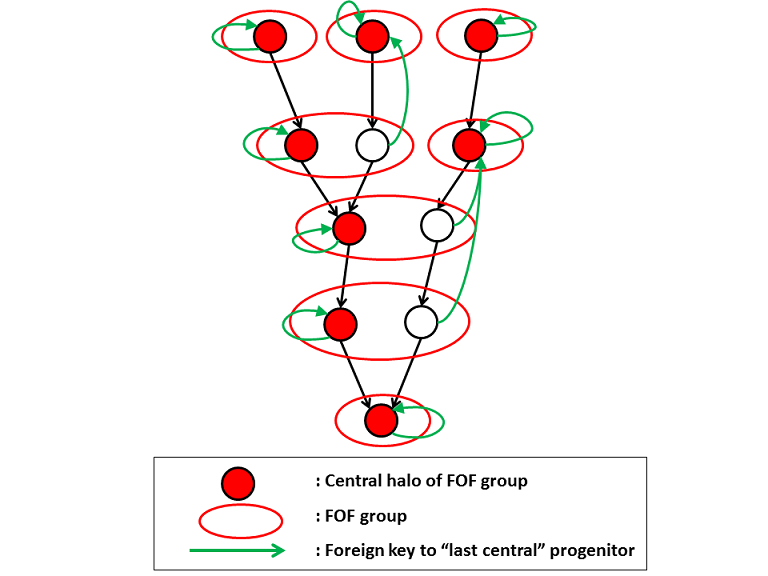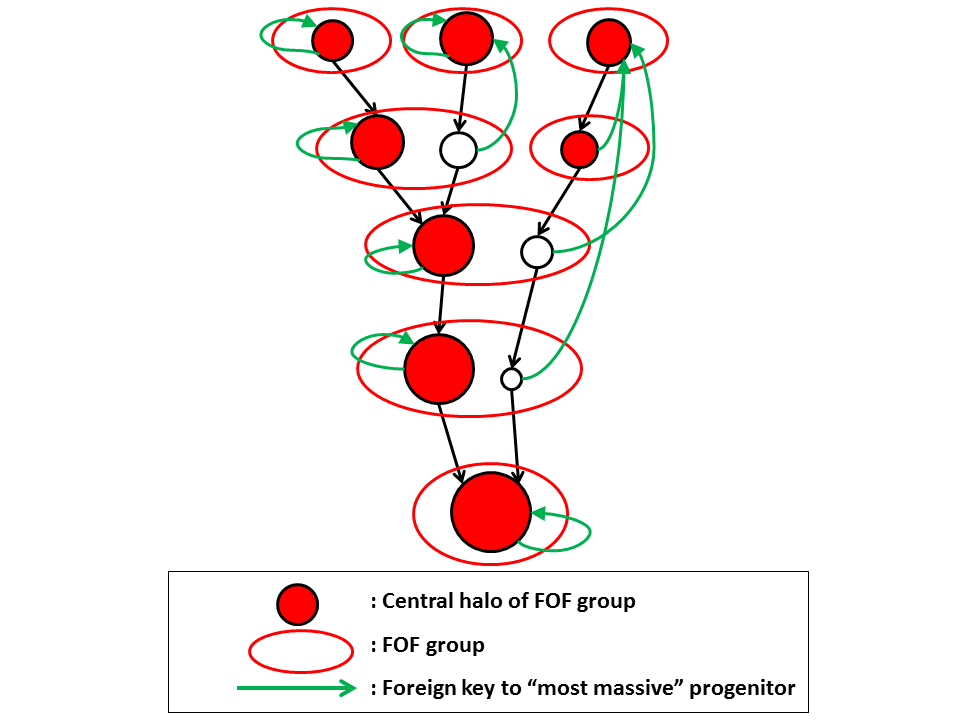3.2.3.1 : More about tree structures in database
|
Here we discuss some more features of the table wrt storing merger trees, in particular for halo merger trees.
A feature that may be useful deals with the status of halos as center or satellite in a FOF group. In the abundance matching approach to predict the distribution of galaxies1, one rank orders halos in mass. One then selects galaxies randomly from a given empirical galaxy mass function, rank orders those and assigns them to the halo of corresponding rank. It turns out that when applying this to subhalos, the instantaneous mass of the halos is not the optimal one to use in the ordering. This is because in the simulations generally satellite subhalos get stripped of their mass once they enter another FOF group. It is deemed better to use the mass of the halos just before it became a satellite, or possibly the highest massthe halo ever had. The process is illustrated in the following figures. Red ellipses indicate FOF groups, red filled circles the central subhalos, black open circles satellite halos. The green arrows in the first figure point from each subhalo to the last time a subhalo on the main branch was a central subhalo. For central subhalos this obviously is a pointer to itself. In the tables this is generally stored in a column lastCentralID. Some properties of this "last central progenitor" such as its vmax or mass are also stored.
In the second picture (where the size of the circles indicates the mass of the subhalo) the green arrow points to the most massive central progenito. This is not necessarily the last time a halo was a central subhalo, maybe mass has been stripped in an earlier fly-by. Also for this we have added an explicit pointer in the database, named peakMassId.
|

